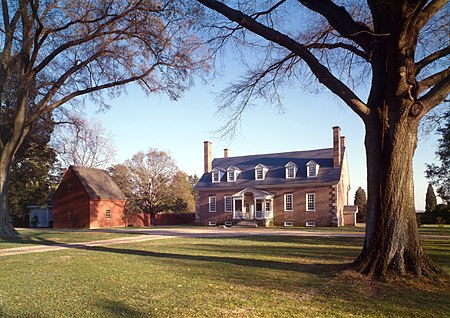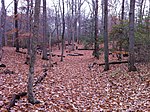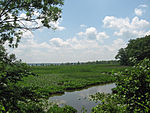Gunston Hall

Gunston Hall is an 18th-century Georgian mansion near the Potomac River in Mason Neck, Virginia, United States. Built between 1755 and 1759 as the main residence and headquarters of a 5,500-acre (22 km2) plantation, the house was the home of the United States Founding Father George Mason. The home is located not far from George Washington's home.The interior of the house and its design was mostly the work of William Buckland, a carpenter/joiner and indentured servant from England. Buckland later went on to design several notable buildings in Virginia and Maryland. Both he and William Bernard Sears, another indentured servant, are believed to have created the ornate woodwork and interior carving. Gunston's interior design combines elements of rococo, chinoiserie, and Gothic styles, an unusual contrast to the tendency for simple decoration in Virginia at this time. Although chinoiserie was popular in Britain, Gunston Hall is the only house known to have had this decoration in colonial America.In 1792, Thomas Jefferson visited Gunston Hall for the last time, attending George Mason's death bed. After Mason's death, the house remained in use as a private residence for many years. In 1868, it was purchased by noted abolitionist and civil war Colonel Edward Daniels. It is now a museum owned by the Commonwealth of Virginia and open to the public. The National Society of The Colonial Dames of America (NSCDA) operates the museum as a joint effort with the Commonwealth of Virginia led by a Board of Regents selected by the NSCDA. The home and grounds were designated a National Historic Landmark in 1960 for their association with Mason.
Excerpt from the Wikipedia article Gunston Hall (License: CC BY-SA 3.0, Authors, Images).Gunston Hall
River Trail,
Geographical coordinates (GPS) Address Website Nearby Places Show on map
Geographical coordinates (GPS)
| Latitude | Longitude |
|---|---|
| N 38.663888888889 ° | E -77.160277777778 ° |
Address
Gunston Hall
River Trail 10709
22079
Virginia, United States
Open on Google Maps








